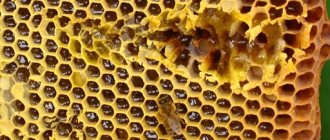Slava Profina 07/25/2018 no comments
0
Every person has their own fears or phobias. On the one hand, phobias are something psychological, and on the other hand, fears help a person not to lose the survival instinct and sense of proportion when faced with danger. Herpetophobia or fear of snakes and lizards is associated with the past, when our ancestors did not know much and did not know how to cope with basic dangers.
What it is
The name is derived from the ancient Greek words ἑρπετόν, which means “reptile”, and φόβος, which translates as “fear”. Herpetophobia is a subtype of zoophobia, fear of animals.
Many people consider themselves herpetophobes, although in fact, not everyone who is afraid of snakes or other reptiles has this fear in the form of a phobia. The fear of creeping creatures is inherent in us by nature; this is a normal reaction. Of course, provided that a person can control his fear, does not lose critical thinking and does not panic at the mere thought of a reptile. Otherwise we are dealing with a phobia.
Interesting! Sometimes the fear of reptiles hides a fear of helplessness, and this type of phobia is associated with the fear of death and pain.
Factors that cause fear
Each herpetophobe fears snakes in his own way. Psychologists identify several factors that cause fear:
- the appearance of reptiles, which many people find scary;
- cold, slippery, unpleasant to the touch skin;
- a strange, from the point of view of a two-legged person, way of moving;
- unpleasant and terrible hissing;
- quick reaction of a creature that can attack completely unexpectedly;
- fear of a poisonous bite and fear of dying.
Causes of herpetophobia
We have already named one of the reasons - the inheritance of fear from distant ancestors. Let's look at others:
- Psychotrauma. Perhaps the first acquaintance with reptiles was unsuccessful, or the person was bitten by a snake or other animal. Or the person witnessed someone else getting hurt.
- Media influence. In Australia, a snake can be found in the toilet of every home. In Russia, in some villages this can also happen. Suggested people do not necessarily have to have personal negative experiences; they may be frightened by the stories of other people, news reports, etc.
- Fear, trauma while watching horror films. Perhaps in childhood the child saw a shocking film or encountered a frightening computer game.
- Parental influence. Mom and dad were afraid of snakes, and the child copied their behavior, or the parents intimidated the child with overprotection.
- Unpredictability of snake behavior. Some species are truly dangerous. All snakes, regardless of species, move silently and can jump out right in front of your feet. During an unexpected meeting, a person has no time to think, analyze the snake for poisonousness - he gets scared.
- Religiosity. For believers, snakes are associated with sins. This can cause fear.
- Injury due to an evil prank. Perhaps friends threw a toy snake into a bag or under their feet, and an impressionable person was afraid of this.
- Fear of rape, denial of male power. This is how Freud, the author of psychoanalysis, described herpetophobia. He believed that the snake is a phallic symbol. And subconsciously, the fear of snakes may be associated with the fear of men.
Fear of reptiles caused by psychological trauma can remain dormant for many years. For example, a childhood trauma can be recalled in adulthood, when a person meets a reptile again.
Conclusion
Now you know what the fear of snakes is called and how to cure herpetophobia. By the way, experts believe that isolated phobias (not part of a broader disorder such as panic or anxiety) can be treated quite quickly; several sessions of psychotherapy are enough for this.
In addition, doctors do not recommend delaying seeking help if fears really interfere with your life. With age, they can worsen, intensify and even lead to complete isolation from society, when a person is afraid to leave the apartment so as not to encounter some danger outside. In order not to bring yourself to such a deplorable state, do not hesitate to go to specialists and work on your fears.
This video explains how different human phobias are formed and the different ways to treat them.
Signs and symptoms of herpetophobia
With a mild degree of the disorder, there is a slight manifestation of symptoms: mild anxiety, restlessness. At the same time, a person can control his reactions. At the next stage, the intensity of fear intensifies, and the herpetophobe can no longer control it. An avoidance reaction is noticeable. Herpetophobe does not visit terrariums or pet stores and is afraid to go for walks in parks and forests.
A herpetophobe is frightened not only by real animals, but also by images or figures of reptiles, as well as sounds, such as hissing. When meeting an object of fear, a person falls into a stupor and may have a panic attack. It manifests itself in a number of somatic reactions:
- nausea,
- dizziness,
- chills,
- tachycardia,
- arrhythmia,
- chest pain,
- sweating,
- feeling of suffocation.
In a moment of panic, the herpetophobe becomes dangerous to himself and others. He has absolutely no control over his reactions and behavior. During panic, a person thinks that he will die or go crazy.
Description and manifestation of phobia
Everyone has a fear of reptiles , but some people treat it with humor, while others absolutely cannot fight it and behave irrationally. The lack of this rationality is expressed not only in hysterics, fear, stupor, anxiety at the sight of a snake, but also in anxiety that reptiles will end up in the home. The patient is haunted by obsessive dreams involving them.
Any object that resembles a snake causes horror in a person. Films and paintings with reptiles can put him in a stupor and panic. This is herpetophobia - one of the types of zoophobia.
Manifestations of this phobia vary: from mild to severe. Some people feel discomfort when touching a reptile, but can safely be near it. Others begin to go hysterical at the sight of a photograph of a snake - this is already a severe form.
Some people treat those suffering from this disease with understanding, others with humor and even consider themselves herpetophobes. Others are afraid to be near such patients, because in the presence of reptiles their behavior is unpredictable and inadequate.
The instinct of self-preservation, that is, the usual fear at the sight of a live snake, is not herpetophobia. What are the manifestations of this disease? Fear of reptiles is expressed in the following:
- Intellectually, a person understands that his fear is far-fetched, hyperbolic, that is, exaggerated. He realizes that not everything is so terrible. But at the sight of a reptile, this awareness abruptly disappears. Immediately anxiety, fear and numbness appear, up to a panic attack.
- Deterioration of the general condition: shortness of breath, palpitations, sweating, nausea, increased blood pressure, dizziness, dry mouth, feeling of lack of air.
- While of sound mind, the herpetophobe loses the ability to express thoughts coherently.
- The feeling that death is about to occur.
- Most often, such people are nervous, fussy, irritable, they find it difficult to concentrate, and they get tired quickly.
- In patients with severe manifestations, all of the above symptoms are strongly expressed, and a panic attack can lead to paralysis.
What does fear of reptiles lead to? In fact, this is a very serious disease and over time its consequences only get worse:
- Herpetophobe begins to fear even those objects that are not directly related to reptiles, since certain associations have already formed in his head.
- Far-fetched fantasies and fears. For example, fear of snake attacks.
- Refusal of pleasant things: picnics, trips to pet stores, zoos, exhibitions.
- The inability to lead a full life, up to complete self-isolation in the apartment.
Treatment of herpetophobia
The main method of treatment is psychotherapy, in particular, the method of systematic desensitization and EMDR. Medicines are prescribed in rare cases, only to relieve pronounced somatic symptoms. You can read more about treating phobias in this article.
You can get rid of the fear of snakes yourself with the help of education. Study the life features of reptiles. Find out what species are available in your area. Visit the terrarium and practice identifying snakes.
How to get rid of a phobia
To get rid of a phobia, you need to change your perception and behavior. Cognitive behavioral psychotherapy is used for this. It involves a gradual rapprochement with the object of fear. First, the client is told about safe types of snakes, shown pictures of them, then he is offered to personally meet a non-venomous snake. A psychologist is nearby, helps to overcome fear, suggests what relaxation methods to use.
Psychologist's advice
Psychologists recommend using the following tips to correct the condition:
- Write a written analysis of your phobia. Determine what exactly scares you. Now write down what snakes live in your region and what is typical for them. Compare this to your fears. Usually at this stage half of the worries disappear. For example, did you know that snakes have no poison?
- Start getting closer to the rest of the worries. Look at the picture of snakes and video of snakes.
- When one type of snake stops causing you panic, visit the terrarium and ask its workers about representatives of the species and the peculiarities of communicating with them. Find a service that allows you to handle snakes.
The diagnosis of ophidiophobia is made if the fear of snakes prevents a person from living a full life for six months or more. What methods are used in the professional treatment of ophidiophobia:
- Eye movement reprocessing desensitization (EMDR). This is a special technique for liberating and correcting the subconscious. It involves making rapid eye movements according to a special pattern. Thanks to this exercise, old memories are no longer perceived as threatening, and psychological trauma is processed.
- Hypnosis. If performed correctly, it can rid a person of a phobia in one session (the number of sessions depends on the severity of the disease).
- Relaxation. This method, unlike others, can be used independently. Relaxation includes breathing exercises, meditation, mental counting and concentration on breathing and affirmations.
This is interesting! Snakes also have their own phobia - hedgehogs. Why are snakes afraid of hedgehogs? Because snake venom has no effect on them. They will eat a grass snake or viper without any problems.
Independent work with a phobia
In the initial stages of development of a phobia, you can cope with the problem yourself. To do this, you need, first of all, to admit that there is a problem and start studying the world of crawling creatures. Practice recognizing dangerous and non-dangerous creatures, master safety precautions when coming into contact with a poisonous representative. Visit the terrarium and practice there; in moments of panic, calm yourself with slow and deep breathing. The end of the fight against a phobia can be a photo session with a boa constrictor, and for starters, you can buy a toy in the shape of a snake.
This is interesting! A snake attacks a person only for the purpose of protection. Remember this.
Causes of fear of snakes
Scientists cannot determine the exact reason why people are afraid of snakes. There are several theories about the origin of the disorder:
- evolutionary origin - the disease was inherited from the ancestors. In the primitive world, man lived in close proximity to snakes. They have developed a self-preservation mechanism. This version does not explain why the fear of snakes persists, but the patient perceives other predators normally;
- personal meeting - 15% of patients claim that the fear arose from unexpected contact with a snake. Severe fear could be provoked by the bite, hissing, or unpleasant appearance of the snake. In other cases, fear arose without personal contact. The patient observed the snake only in pictures, in terrariums, or on TV;
- heredity – a child’s fear of snakes is passed on from his parents. The genetic code stores information about a person's response to stressful situations. It turns out that if one of the parents in his life experienced genuine horror from meeting a snake, then the fear of snakes will be passed on to the child by heredity. The disease in a child is formed when an adult sees a fear of snakes; he remembers this reaction and reproduces it in the future;
- unstable psyche - fear of snakes occurs in people who are susceptible to suspiciousness, impressionability, and vulnerability. This category of citizens reacts to everything with special sensitivity. Their fear arises because of a joke from friends, for example, they planted a snake in his house, in his personal belongings. Such a joke is the primary source of the development of the disease;
- biochemical processes - their disruption contributes to the formation of psychological problems. Improper functioning of the neurotransmitter system provokes the development of a phobia. The problem arises with the abuse of alcoholic beverages and the addiction to taking antibiotics, which affect the central nervous system. Drug addiction causes the development of a fear of snakes.
Fear of snakes – psychosomatics
Psychosomatics as a reaction of the body occurs in response to a violation of a person’s adaptation to the environment as a result of prolonged stress. Fear of snakes is a phobia that forms a long-term neurosis-like state, which can be expressed in the following manifestations:
- uncontrollable fear of snakes;
- pronounced irrational feeling of anxiety;
- an irresistible, obsessive desire to avoid meeting;
- the fear of snakes is felt to have no boundaries or limits;
How to stop being afraid of snakes
Obsessive fears negatively affect the patient’s life, reducing its quality. Due to anxiety and tension, a patient suffering from herpetophobia significantly limits his communication with nature. This negatively affects his psycho-emotional background.
If pathological fear goes beyond the bounds of reason, then the help of a psychotherapist is needed. If there are mild manifestations of a phobia, following these recommendations will have a positive effect in the fight against the fear of snakes:
- deeper study of special literature about the life of snakes;
- watching documentary newsreels about snakes;
- visual contact and observation in a zoo or serpentarium of the behavior of reptiles, accompanied by relatives or friends;
- direct contact with a live, tamed snake.
By following these recommendations, the fear of reptiles will gradually begin to subside and the patient’s quality of life and emotional background will improve. The prognosis for the future for life and work ability is positive.
Author of the article: neurologist Tatyana Vladimirovna Ivanova
Diagnostics
The diagnosis of ophidiophobia is made if the phobia that prevents a person from living lasts more than six months
Diagnosis of herpetophobia is based on interviewing a person who has a fear of snakes. Diagnostic criteria in this case will be:
- the presence of a pronounced, constant, unjustified fear that arises when encountering snakes or when anticipating such a meeting;
- presence of panic attacks in a frightening situation;
- a person’s understanding of the groundlessness of his fears;
- desire to avoid frightening situations.
The diagnosis is made if the period during which the phobia prevents a person from functioning normally exceeds six months. An initial examination by a psychiatrist or psychotherapist costs approximately 1,500-2,000 rubles.
How to avoid developing fears
Fear of snakes occurs for various reasons. To reduce the likelihood of its occurrence, you need to actively get acquainted with the world around you. The more a person knows about different animals, amphibians, and reptiles, the better he understands that not all representatives of the fauna can pose a danger.
Parents can instill fear in their child of some object
In childhood, children cannot be limited in their knowledge of the world. They can calmly treat insects and other nasty living creatures. The more and more varied the contacts, the easier it is for the child to get used to certain creatures.
Psychotherapy
The optimal course of treatment is cognitive behavioral therapy. Firstly, this is not a particularly lengthy process, and secondly, the result is long-lasting and fully understandable by the client. The main method of work is aimed at creating a “positive” experience of interaction with the object of fear.
The method of systematic desensitization helps a person learn to interact with the environment in a situation that is usually “threatening” to him. A better understanding of the causes of fear and the range of situations that frighten it allows the client to deal with her fears as successfully as possible.
Often, many people, at the end of psychotherapeutic sessions, buy small lizards - as a prototype of their fear. Constant interaction with what seemed dangerous completely eradicates fear.
And finally, an important note: ophidiophobia is a fear that can very quickly progress into complex and “treatment-resistant” disorders. These may include OCD, the appearance of delusional ideas, and social disturbances. That is why you should not underestimate the danger of your fear and refuse to seek professional psychotherapeutic help. Timely treatment is a guarantee of better results with a minimum of money and time spent.
Author of the article: Borisov Oleg Vladimirovich, developmental psychologist
Should you be afraid of snakes?
Fear of snakes is justified if a person is in the wild and stays in a number of countries where there are poisonous specimens here, reasonable caution will not hurt. Some facts why you shouldn’t be completely afraid of snakes:
- The stereotype that the snake is the most poisonous animal on the planet is incorrect; out of 2.6 thousand species, 240 are poisonous.
- The snake is also afraid of humans and will not attack first unless it is stepped on or comes close to the nest.
- The snake rarely releases venom, mostly just bites.
- Poor hearing and vision during molting - even if a person passes by the snake may not notice.
- During the day, snakes hide in secluded places and are active only in the morning and at night.











